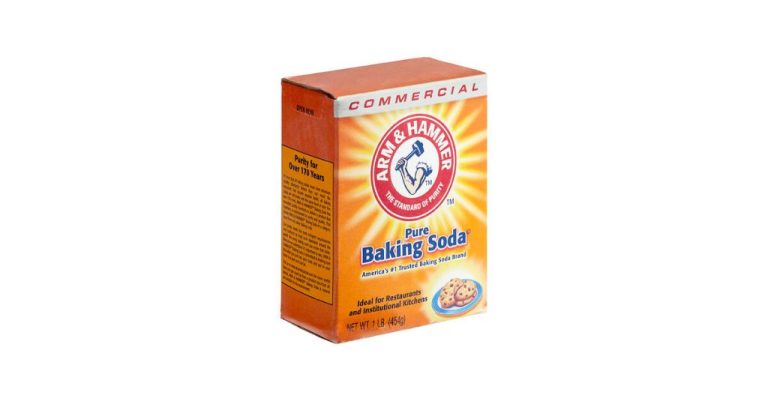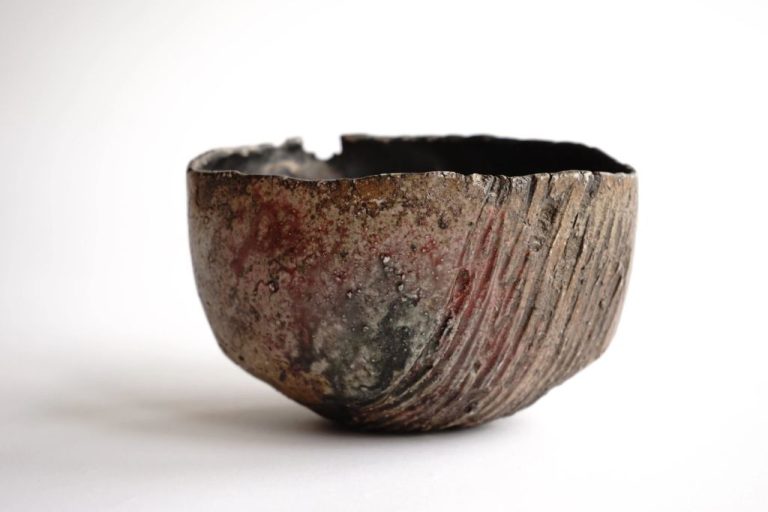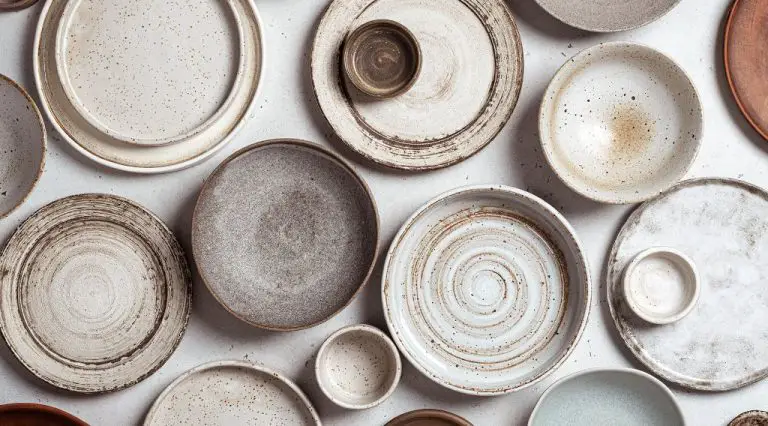Can I Make A Clay Crucible?
What is a Crucible?
A crucible is a container made of heat resistant material, designed to withstand extremely high temperatures. Crucibles have been used for thousands of years to melt metals, hold chemical reactions, and process materials that require high heat.
The earliest known crucibles date back to 3000 BC and were made of clay. They were used by metalworkers to melt copper, iron, and tin to shape tools, weapons, and other implements. Ancient civilizations all over the world including Egypt, Greece, Rome, and Asia manufactured and utilized crucibles in metalworking and proto-chemistry.
Today, crucibles are a staple tool in many modern laboratories and industries. They are commonly made of graphite, porcelain, or metal alloys and used in a variety of high-temperature applications:
- Melting and casting metals in foundries and jewelry making
- Containment vessels for chemical reactions and processes
- Holding starts materials in the production of ceramics and semiconductors
- Scientific experiments and tests involving extreme heat
Crucibles allow substances to withstand tremendous heat while retaining their material properties. Their high heat resistance makes them invaluable for working with materials at extreme temperatures.
Properties of Crucible Materials
Crucibles are often made from heat-resistant materials that can withstand extremely high temperatures without breaking down. Some common materials used to make crucibles include:
Clay
Clay is one of the most traditional materials used to make crucibles. It’s readily available, inexpensive, and can be easily shaped and molded before firing. The porosity of clay makes it suitable for absorbing fluxes. However, clay has low strength and thermal shock resistance, making it prone to cracking. Clay crucibles also have lower maximum temperature limits compared to other materials.
Graphite
Graphite crucibles are made from carbon and offer excellent high temperature strength and thermal conductivity. They are inert, non-reactive, and have high purity. Graphite can withstand very rapid temperature changes, but it is relatively brittle. Graphite crucibles are also more expensive than clay.
Porcelain
Porcelain crucibles provide great chemical resistance coupled with mechanical strength. Porcelain can withstand rapid temperature changes without cracking. It has a high melting point of over 2,000°C. However, porcelain can be damaged by thermal shock and is susceptible to reacting with certain reagents.
Overall, the best material for a crucible depends on factors like the working temperature, thermal/mechanical stresses, chemical reactivity, and cost. Clay is suitable for many applications where high purity and temperature resistance is not critical. Graphite excels when purity and rapid heating/cooling is needed. Porcelain is ideal for high chemical resistance use cases.
Choosing the Right Clay
Not all clays are well-suited for crucible making. The clay must withstand high temperatures without cracking, deforming, or melting. The key properties to evaluate are refractoriness and plasticity.
Refractoriness refers to the temperature at which the clay will deform. For crucible making, aim for a clay with a refractoriness of at least 1200°C. Some good options are fireclays, which are naturally refractory, or stoneware clays enhanced with grog or chamotte (pre-fired clay pieces).
Plasticity refers to how easily the clay can be molded and shaped without cracking. A more plastic clay will be easier to form into a crucible shape. However, extremely plastic clays can sag or slump when drying. An optimal plasticity level would be in the medium to high range.
Obtaining suitable clay is key. Look for fireclays or stoneware clays at local pottery supply stores. You can also order clays online tailored for high-temperature applications. Be sure to read specifications and descriptions carefully to ensure the clay’s properties align with crucible requirements before purchasing.
Shaping and Molding the Crucible
Once you have chosen the appropriate clay for your crucible project, it’s time to start shaping and molding it into the desired form. Proper clay preparation is crucial for obtaining a vessel that maintains its shape through drying and firing. Here are some techniques to use:
Wedging: Kneading and wedging removes air pockets from the clay and aligns the clay particles, leading to greater structural integrity. Repeatedly cut the clay in half, slam it back together and compress. Aim for at least 100 strokes.
Kneading: Similar to wedging, kneading involves folding the clay over on itself while applying pressure. Do this on a clean, flat surface until the clay is uniform in texture.
Once your clay is properly prepared, you can start shaping the crucible. Here are some options:
Pinch pots: Pinching clay between your fingers and thumb is the simplest handbuilding technique. Gradually pinch the walls up to your desired height and smooth transitions between sections.
Coils: Roll clay into long coils, then stack them on top of each other in a spiral pattern building upwards. Use slip to fuse the coils together.
Slabs: Roll out uniform clay slabs and cut shapes that can be joined into a box form. Score and use slip to adhere the slabs.
As you build the crucible shape, periodically use metal or wooden tools to refine the interior contours and smooth the walls into an even thickness. Create a curved, sloped interior without corners for optimal melting properties. Let the shaped crucible sit until leather hard before continuing.
Drying the Crucible
Properly drying your homemade crucible is a critical step to ensure it maintains its shape and integrity through the firing process. There are two main approaches for drying a crucible – air drying or using accelerated methods like fans or low heat:
Air drying is the most gentle but time-consuming approach. Place your wet molded crucible in a warm (not hot), dry, well-ventilated area out of direct sunlight. Allow it to air dry for several days up to a week or longer, depending on the size and thickness of the crucible walls. Rotating the crucible periodically will ensure it dries evenly.
Fans or low heat can help accelerate the drying time, but caution must be used to prevent cracks. Place the wet crucible near a circulating fan on low speed, keeping it out of direct wind flow. Or put it in a low oven or food dehydrator at temperatures no higher than 120-150°F. Monitor closely and rotate periodically for even drying. Higher heat risks drying too quickly and creating cracks.
Test for dryness by weighing the crucible periodically. When the weight stabilizes and no longer drops, the interior and exterior moisture has fully evaporated. Tap gently and listen for a light, ringing sound with no dull thuds indicating wet spots. The crucible is then ready for bisque firing before it can be safely used at high temperatures.
Firing the Crucible
Firing the crucible is one of the most important steps in the process of making your own crucible. You’ll need access to a kiln that can reach very high temperatures – at least 1200°C. The two main types of kilns are electric and gas.
Electric kilns are easier to find and use for home potters. Look for a kiln that can reach cone 10 temperatures. Be sure the kiln chamber is large enough to fit your crucible. Program the controller with a slow firing schedule, starting at 200°C and increasing by 100°C per hour up to 1000°C. Then increase by 50°C per hour until you reach the kiln’s max temperature and hold for at least 2 hours.
Gas kilns can reach higher temperatures but require more ventilation and safety precautions. Make sure your space is well-ventilated before firing. Program the kiln with a gradual ramp up to 1300-1400°C. Hold at max temp for 4+ hours to fully vitrify the clay. Let the crucible cool slowly overnight inside the kiln.
With proper firing, your homemade crucible will be ready for high-heat applications. Just be sure to test it before use!
Testing the Fired Crucible
Once your crucible has been fired, it’s important to test it thoroughly before use. Here are some key things to check:
Checking for cracks or flaws
Carefully inspect the fired crucible for any cracks, holes, or other flaws. Spin the crucible around and check all surfaces and angles. Even tiny flaws can compromise the structural integrity when in use. Tap gently with a tool to listen for problem areas that sound hollow.
Testing melting point with sample materials
Try a small test melt with sample materials to assess the crucible’s melting point. Start with a metal like lead that has a relatively low melting point. Increase the temperature gradually while observing if and when melting occurs. This will determine if the crucible can withstand typical melting points for its intended purpose.
Assessing durability with test melts
Perform a series of test melts, starting with small amounts of material for short durations. Allow the crucible to fully cool between tests. Check for any cracks, warping, erosion, or other damage after each test. This will reveal if the crucible can hold up to repeated use at high temperatures without degrading over time.
Using the Crucible
Once you have successfully fired your homemade crucible, you are ready to start using it for melting metals and other materials. However, proper precautions need to be taken to ensure safe usage.
Be sure to wear appropriate safety gear when handling the hot crucible. Heat-resistant gloves and tongs should be used to grip the crucible. Safety glasses are also recommended in case of splashes or spills. Never handle the hot crucible bare-handed.
Follow all proper melting procedures for the material being melted. Do not overheat the crucible or raise temperatures too rapidly, as this could cause cracks or damage. Refer to melting points and safety guidelines when working with metals like gold, silver, copper and lead.
After use, allow the crucible to fully cool before handling. Then thoroughly clean all interior and exterior surfaces. Residual buildup can be removed with a metal brush. Check for any damage like cracks after each use.
With proper precautions, your homemade crucible can be safely reused many times. Maintain vigilance when handling at high temperatures, and inspect regularly for damage to maximize the lifespan of your crucible.
Troubleshooting Common Issues
When making your own clay crucible, you may run into some common problems like cracking, melting, or leaking during the firing process. Here are some tips for troubleshooting these issues:
Cracking
Cracking is one of the most common problems with homemade crucibles. This can happen because the clay dried too quickly, the walls are too thin, or there are air pockets in the clay. To prevent cracking:
- Make sure to dry the crucible slowly and evenly. Wrapping it in plastic while drying can help.
- Use a thicker walled design, at least 1/2″ thick.
- Knead the clay thoroughly to remove any air bubbles.
Melting
If your crucible starts melting or sagging during firing it means the clay cannot withstand the high temperatures. Try a more heat resistant clay and make sure to fire slowly and evenly up to the maximum temperature.
Leaking
Leaks and holes can develop if the walls are too thin or firing temperature is too high. Using a layer of wood ash or sand inside the crucible can help seal any small holes during firing. Also make sure the design has enough thickness to hold its shape.
With care in the clay preparation, molding, and firing process, you can troubleshoot many common crucible problems. Don’t get discouraged if your first few attempts don’t work perfectly! Making DIY crucibles takes some trial and error to get just right.
DIY Crucible Tips and Tricks
Making your own crucible at home can be a fun and rewarding project. Here are some tips and tricks to help ensure success:
Recommendations for Beginners
If this is your first time making a crucible, start with a small, simple design. This will allow you to get familiar with the molding and firing process before attempting more complex shapes.
Choose an easily accessible clay that fires at a lower temperature. Earthenware or raku clays typically fire between 1500-1800°F which can be achieved in a simple kiln.
Let the crucible dry slowly to minimize cracking. Place it in a room temperature area out of direct sunlight and allow to air dry for several days before firing.
Handy Tools and Supplies
A basic pottery wheel can help shape rounded crucibles evenly. An extruder tool will help press out long tubular shapes.
Have a spray bottle on hand to keep clay moist during the molding process. Plastic bags can cover works-in-progress.
A kiln thermometer is essential to monitor firing temperatures. Insulative batts or wadding can help protect the kiln floor and shelves.
Storing and Labeling Finished Crucibles
Allow fired crucibles to fully cool before touching or moving them to prevent cracks.
Label crucibles with their firing temperature and materials used. This helps match them to the proper metallurgical processes later.
Carefully stack multiple crucibles with padding in between to prevent chips and scratches during storage.



